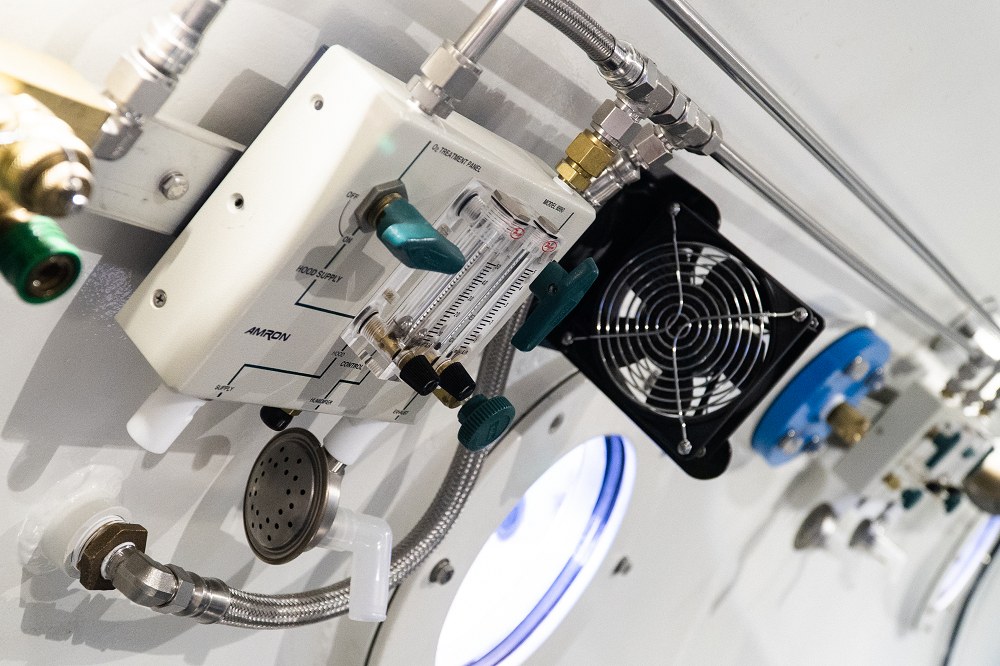This study aims to compare patients that receive hyperbaric oxygen or Trental and Vitamin E
immediately after completion of radiation therapy to evaluate which treatment best reduces
radiation fibrosis.
The National Brain Injury Rescue and Rehabilitation Study – a multicenter observational study of hyperbaric oxygen for mild traumatic brain injury with post-concussive symptoms
The National Brain Injury Rescue and Rehabilitation Project was established as a preliminary study to test the safety and practicality of multi-center hyperbaric oxygen administration for the post-concussive symptoms of chronic mild traumatic brain injury as a precursor to a pivotal, independent, multi-center, controlled clinical trial. This report presents the results for 32 subjects who completed a preliminary trial of hyperbaric oxygen several years before the passage of the 21 st Century Cures Act. This study anticipated the Act and its reassessment of clinical research. Subjects received 40-82 one-hour treatments at 1.5 atmospheres absolute 100% oxygen. Outcome measures included repeated self-assessment measures and automated neurocognitive tests. The subjects demonstrated improvement in 21 of 25 neurocognitive test measures observed. The objective neurocognitive test components showed improvement in 13 of 17 measures. Earlier administration of hyperbaric oxygen post injury, younger age at the time of injury and hyperbaric oxygen administration, military status, and increased number of hyperbaric oxygen administrations were characteristics associated with improved outcomes. There were no adverse events. Hyperbaric oxygen was found to be safe, inexpensive and worthy of clinical application in the 21 st Century model of facile data collection provided by recent research regulatory shifts in medicine. The study was approved by the ethics review committee of the Western Institutional Review Board (WIRB; Protocol #20090761).
Growth Hormone Deficiency: Health and Longevity
Abstract The important role of GH in the control of mammalian longevity was first deduced from extended longevity of mice with genetic GH deficiency (GHD) or GH resistance. Mice with isolated GHD (IGHD) due to GHRH or GHRH receptor mutations, combined deficiency of...
Clinical Trial – The Role of Hyperbaric Oxygen and Neuropsychological Therapy in Cognitive Function Following Traumatic Brain Injury
Traumatic brain injury (TBI) caused by accidents is a very important public health problem in
Taiwan. There are many people with brain damage and cognitive dysfunction caused by traumatic
brain injury every year. Currently, there is no effective treatment for cognitive dysfunction
caused by traumatic brain injury. Evidence from clinical studies in recent years suggests
that hyperbaric oxygen therapy may be a treatment for repairing nerves after brain injury.
Many studies have shown that oxidative stress and inflammatory responses play an important
role in the pathogenesis of the central nervous system. In recent years, our research team
has shown that oxidative stress and inflammatory response are significantly associated with
the prognosis of patients with traumatic brain injury, cerebral hemorrhage, and stroke
patients. More and more evidences also show that oxidative stress and inflammatory response
play an important role in the neuropathological changes of mental cognitive sequelae after
traumatic brain injury. This injury may be gradual from the time of head trauma. This process
begins with the generation of oxidative stress and free radicals. When the cell repair and
free radical scavenging system can not effectively overcome the excessive production of free
radicals, an oxidative damage reaction will occur, causing a series of inflammatory cells and
cytokines to be activated. Studies have also shown that when inhibiting those free radicals
that produce oxidative stress, the neurological function and cognitive function of the head
after trauma can be significantly improved.
It is becoming widely acknowledged that the combined action of hyperoxia and hyperbaric
pressure leads to significant improvement in tissue oxygenation while targeting both
oxygenand pressure-sensitive genes, resulting in improved mitochondrial metabolism with
anti-apoptotic and anti-inflammatory effects. The investigators published an article this
year showing that hyperbaric oxygen therapy can improve the prognosis of patients with acute
stroke and increase endothelial progenitor cells in the systemic circulation.
The investigators plan to conduct this research project through hyperbaric oxygen therapy and
neuropsychological therapy, and using scientific tests and neurocognitive function
assessments. The investigators hope to answer the following questions: (1) Whether the
treatment of hyperbaric oxygen can improve oxidative stress and inflammatory response after
brain injury, and observe changes in biomarker concentration; (2) Whether hyperbaric oxygen
therapy and neuropsychological therapy can improve cognitive function after brain injury; and
(3) which biomarkers are factors that influence cognitive function prognosis.
Clinical Trial – Development of Automated Analysis to Electroencephelogram (EEG) Data in Patients Treated at the Sagol Hyperbaric Medicine and Research Center at the Years 2017-2019.
DELPhI software developed for the analysis of EEG recordings in response to magnetic
stimulation in relation to clinical data.
Clinical Trial – Therapeutic Issues for Autism
This study aimed to show the effects of hyperbaric oxygen therapy and/or Risperidone in
improving symptoms of autism
Clinical Trial – Hyperbaric Novabupi® in Spinal Anesthesia in Lower Limbs Vascular Surgery
This is a multicenter, randomized, double-blind, active-controlled study to evaluate the
non-inferiority of hyperbaric Novabupi® versus hyperbaric Neocaine® in spinal anesthesia in
lower limbs vascular surgery.
The schedule consists of three visits: screening (visit 1); pre-anesthetic evaluation and
randomization (visit 2); treatment, and discharge from study (visit 3).
Clinical Trial – The Analgesic Efficacy of Bilateral Erector Spinae Plane Block in Comparison With Intrathecal Morphine After Elective Cesarean Section
The aim of this study was to assess the analgesic efficacy of bilateral erector spinae plane
block in comparison with intrathecal morphine after elective cesarean section under spinal
anesthesia.
Autophagy and aging: Maintaining the proteome through exercise and caloric restriction
Abstract Accumulation of dysfunctional and damaged cellular proteins and organelles occurs during aging, resulting in a disruption of cellular homeostasis and progressive degeneration and increases the risk of cell death. Moderating the accrual of these defunct...
Clinical Trial – Anti Inflammatory Effects of Local Cryotherapy in Knee Arthritis
47 patients with non-septic knee arthritis were treated by local ice (30 min) or cold CO2 (2
min) twice at an 8 hour-interval for 1 day.
The synovial fluid was collected just before the first cold application then 24 hours later.
Cytokine, VEGF, NF-kB, PG-E2 levels were assessed in the synovial fluid before/after
treatment.
Contralateral arthritic knees were used as paired controls when possible.



